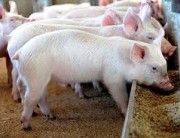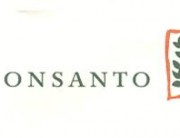Summary
FSANZ (Food Standards Australia New Zealand) has self-published two statements on its website that are critical of a published and peer-reviewed study by Carman et al (2013), titled: “A long-term toxicology study on pigs fed a combined genetically modified (GM) soy and GM maize diet”. The study found adverse effects on pigs fed the combined GM diet. This is a response to FSANZ’s criticisms by the two senior authors of the study. It has been approved for release by the Directors of the Board of the Institute of Health and Environmental Research (IHER).
by Dr Judy Carman and Howard Vlieger
In its statements, FSANZ asserted that the following needed to be done in our study:
- full compositional information on the diets used;
- a confirmation of the corn particle size in the diet;
- an exhaustive mycotoxin analysis on the diet including trichothecenes and zearalenone;
- weighing of intestines (even if the presence of digesta invalidates the results);
- an examination of the mucosa of intestines, intestinal contents, rectal contents and regional lymph nodes;
- an investigation into the slaughter order of animals relative to stomach results;
- a report as to whether animals had seen another animal stunned;
- haematology on blood;
- histopathology on tissues including the uterus and stomach;
- an investigation into the ovarian activity of the animals; and
- data sufficient to determine a dose-response relationship.
In contrast, FSANZ requires no animal feeding studies whatsoever from applicants seeking approval to use GM plant products in food or feed. FSANZ therefore requires no evidence from animal feeding studies to determine that GM crops are safe to eat, but requires extensive information from such studies in order to accept data indicating that GM crops are harmful.
FSANZ made numerous statements about the published study that are factually incorrect. Specifically, FSANZ stated that:
- pigs were killed by being stunned in a pen when they were not;
- certain mycotoxins were not measured in the diet when they were;
- not enough information was given about the diets when the information exceeded an entire page;
- a stomach pictured in the paper came from a GM-fed pig when it did not;
- the authors said that haematology was a poor measurement of inflammation when the authors said no such thing; and
- the authors “attribute ulceration to the GM feed” and believed that “pigs had been suffering from blood loss from gastric ulcers for some time” when the authors clearly show the opposite – that there was no difference in ulceration (including bleeding ulcers) between the GM-fed and non-GM-fed pigs.
FSANZ also misrepresented the number of pigs per group.
FSANZ then extrapolated from these and other errors to make further incorrect statements and conclusions.
FSANZ also contradicted itself. It:
- made statements about the particle size of the corn in the diets that only make sense if GM corn is not substantially equivalent to non-GM corn, in contradiction to its previous assertions that GM corn is substantially equivalent to non-GM corn; and
- contradicted itself as to whether a certain mycotoxin could be causing the results.
In its assessment of the study, FSANZ did not provide any supporting scientific evidence for its opinion. In contrast, our published paper listed 32 scientific references.
In our view, FSANZ has demonstrated a poor understanding of standard clinical practice, research methodology, such as the implications of randomisation, and statistical methods. Of further concern, FSANZ did not call for further studies to be done on the GM crops investigated here to further investigate the adverse effects found, and did not address the lack of safety assessments of GM crops containing a mixture of GM genes.
Introduction
FSANZ self-published two statements on its website about the study. We have copied each comment from each statement from its website, dated 31 July 2013, followed immediately by our reply.
FSANZ”s statement, titled: “Response to a feeding study in pigs by Carman et al”.
These comments were accessed on 31 July 2013 at
http://www.foodstandards.gov.au/consumer/gmfood/Pages/Response-to-dr-Carman’s-study.aspx
FSANZ: “The authors have not provided convincing evidence that stomach inflammation was present. The stomach data, as presented, do not support the authors’ interpretation and conclusions because: The presence of “inflammation” was determined by visual appearance (reddening) only, without any microscopic (histological) confirmation. This is not considered a reliable method for establishing the presence of true inflammation, because it relies solely on the colour of the tissue which can vary for many reasons.”
Our reply: Our study relied on the use of veterinary experts with current practicing licences. In effect, FSANZ is saying that a veterinarian (or doctor) cannot determine if an animal (or human) has inflammation of a tissue (eg a throat), without cutting out a sample of the tissue and sending it to a laboratory. This goes against standard clinical practice. The veterinarian that assessed stomach inflammation has many years of training and experience, including years of assessing inflammation. Because FSANZ did not reveal the author(s) of its statements, nor evidence to support their claims, no-one is able to determine the expertise underlying their opinion. However, we are not aware of anyone in FSANZ having any training or experience in this area.
FSANZ suggested that the reddening may not be due to inflammation but provided no alternative explanation for the reddening.
While FSANZ wanted histology for this feeding study, they do not require it for any feeding studies conducted by the GM industry. In fact, FSANZ does not require any feeding studies to be conducted on any GM crop whatsoever before they assess the crop to be safe to eat.
FSANZ: “If the GM diet caused the stomach inflammation, the total number of GM-fed pigs with stomach inflammation would be expected to be greater than non-GM fed pigs. According to the data provided however, greater numbers of non-GM fed pigs exhibited “inflammation”.”
“The authors erred in their statistical approach to analysing the stomach “inflammation” data. If the data are analysed using more appropriate statistical methods, no statistical association with diet exists.”
Our reply: Together, two authors of the paper have qualifications and over 45 years of experience in biostatistics, covering the statistics used in agriculture, medicine (including toxicology) and epidemiology. We are not aware of a single statistician on the staff of FSANZ. While FSANZ wanted “more appropriate statistical methods”, it did not describe what those methods are supposed to be.
The paper clearly stated that some inflammation is expected in the stomachs of pigs due to the use of finely ground corn in the diets of US pigs. The study investigated if feeding a GM diet increased the severity of inflammation from that baseline. The correct statistical test was used to determine that. Ignoring all the information about the severity of inflammation in the data, as FSANZ wants to do, ignores the very thing that the authors are trying to measure.
FSANZ: “The authors have not proved that the statistically significant increase in uterine weight is attributable to the GM diet.”
“The relevance of uterine weight data and the presence of fluid in uteri cannot be determined without information on the ovarian activity of the affected pigs, and without microscopic (histological) evidence to determine the condition of the endometrium. Uterine weight and fluid content can vary enormously in young female pigs based on the stage of puberty and/or their reproductive cycle.”
Our reply: At the beginning of the study, the pigs were randomly assigned into two groups. This process “randomised-out” (and therefore made equal) all factors between the two groups. Medical researchers do this so that at the start of the study, the two groups are equivalent (including for ovarian activity, uterine weight, uterine fluid content etc.). One of the two groups was then fed the GM diet and the other group was fed the non-GM diet. Everything else was kept the same throughout the study. Therefore, at the end of the study, if there was a difference between the two groups, then it was due to the GM diet. Therefore, the difference in uterine weights was due to the GM diet. FSANZ suggested that there may be a difference in puberty and/or the reproductive cycle between the GM-fed and non-GM-fed pigs. If there was, then that would also be due to the GM diet.
FSANZ: “There are many deficiencies with the design, conduct and reporting of the study. More detailed comment on these deficiencies is available. These deficiencies are sufficient to invalidate the study conclusions.”
Our reply: We have addressed everything that FSANZ has raised.
FSANZ: “Overall, the data presented in the paper are not convincing of adverse effects due to the GM diet and provide no grounds for revising FSANZ’s conclusions about the safety of previously approved glyphosate-tolerant and insect-protected GM corn lines and glyphosate-tolerant GM soy lines.”
Our reply: FSANZ provides no reason for this assessment.
FSANZ”s other statement, titled: “Detailed comment on Carman et al (2013): study design and conduct”
This commentary was accessed on 31 July 2013 at:
http://www.foodstandards.gov.au/consumer/gmfood/Pages/Detailed-commentary-.aspx
FSANZ: “Given the authors claim that effects of the GM diet include gastroenteric effects and effects on the female reproductive system, it is surprising that the mycotoxin assays did not include trichothecenes, which could cause gastroenteric inflammation, and zearalenone, which has oestrogenic effects. Trichothecenes and zearalenone are common contaminants in grain-based animal feeds in the Midwest of the United States.”
Our reply: Trichothecenes and zearalenone were measured and were not detected.
FSANZ: “There is a lack of information on the composition of the control (non-GM) and GM diets. This does not allow the impact of other dietary factors, unrelated to the GM trait, to be excluded.”
Our reply: Extensive information was provided about the diets, including the whole of Table 1 of the paper, which covers an entire page.
FSANZ: “Only a single GM diet was used which precludes the possibility of determining if a dose-response relationship exists.”
Our reply: Evaluating a dose-response relationship was not the purpose of our study. The aim of our study was to determine if there was an association between eating a mixed GM diet and certain health outcomes. Now that an association has been found, it should be the aim of subsequent, dedicated studies to investigate a dose-response relationship.
FSANZ: “No analyses were done to confirm that the particle size of the diets was equivalent. This is surprising given the authors’ themselves noted that the gastric mucosa of pigs is very sensitive to the particle size of the diet.”
Our reply: The paper states that: “GM and non-GM corn were both ground using the same cleaned equipment, size screen and revolutions per minute to obtain the same particle size”. Therefore, unless GM corn behaves differently to non-GM corn when being ground, the particle size of ground GM corn should be the same as non-GM corn. FSANZ has repeatedly stated that GM corn is substantially equivalent to non-GM corn, and that therefore, GM corn should behave the same when ground.
FSANZ: “The group sizes are very large (14 followed by 42) which makes any calculation of feed intake subject to large uncertainty.”
Our reply: The larger the sample size, the lower the uncertainty in statistical results. The group sizes were not 14 followed by 42.
FSANZ: “Mortalities in both groups are extremely high by industry standards. This suggests there may have been confounding stressors affecting the pigs.”
Our reply: This was a study conducted under commercial conditions in the United States, and mortalities are commensurate with that setting, where the majority of commercial pigs have infectious diseases such as PRRS not seen in Australia or New Zealand. Please see the animal husbandry section of the GMOJudyCarman.org website for more information.
FSANZ: “There is no apparent reason as to why the intestines were not weighed. Failure to examine the mucosa of the intestines, and the intestinal contents, is also a major deficiency. If the pigs had been suffering blood loss from gastric ulcers for some time, as the authors seem to believe, then this might be evident in rectal contents, so these should have been examined.”
Our reply: The paper clearly stated that the intestines were not weighed due to the amount of digesta in them, which would have made any weight measurement inaccurate.
At no time did the authors suggest that “pigs had been suffering blood loss from gastric ulcers for some time” as FSANZ claims. In contrast, the paper clearly stated that there was no difference between the two dietary groups for the number or type of ulcers, including bleeding ulcers. There is therefore no reason to inspect the rectal contents.
FSANZ: “The authors claim that the stomachs showed ‘inflammation’ based on the presence of hyperaemia (reddening) but have failed to establish that inflammation was present because there is no histopathology. Inflammation can only be confirmed by demonstrating the infiltration of inflammatory cells (leukocytes such as polymorph neutrophils, lymphocytes and macrophages). The rugae (internal folds) of the stomach of the GM-fed pigs do not appear to be swollen relative to those in the stomach of the non-GM pig. If there was genuine inflammation, oedema, leukocyte infiltration and fibrosis would cause obviously thickened rugae.
Our reply: FSANZ incorrectly stated (below) that one of the four pig stomachs (shown in Figure 1 of the paper) came from a pig fed the GM diet, when it was clearly stated in the paper that it came from a pig fed the non-GM diet. On the basis of FSANZ’s incorrect allocation of data, FSANZ then decided here that the rugae of the GM-fed pigs in the picture “do not appear to be swollen relative to” non-GM-fed pigs. FSANZ then extrapolated their incorrect “findings” on these four stomachs to make statements about the appearance of the other 141 stomachs, without ever having seen them.
We have previously addressed FSANZ’s belief that inflammation can only be determined using histology.
FSANZ: “The mean stomach-to-body weight ratio of the GM-fed pigs is reported to be comparable to that of the non-GM fed pigs, yet if the GM-fed pigs had been suffering gastric inflammation for weeks, oedema, infiltration of inflammatory cells (leukocytes) and fibrosis would be expected, and these changes are likely to lead to a significant increase in stomach weight, relative to body weight.”
Our reply: The stomach-to-body weight ratio was higher for GM-fed pigs than for non-GM-fed pigs, but did not reach statistical significance.
FSANZ: “Given that the pigs identified as B15, D22 and C34 (stomachs photographed in Figure 1) were given the same diet of GM food, the difference in gross appearance between their stomachs is considerable. Acute stress can cause hyperaemia of the gastric mucosa therefore this study may have been confounded by the stress of fasting and slaughter. Pigs become very agitated and stressed if they see or hear other pigs in the same pen being stunned for slaughter. Thus it would be important to know the order of slaughter relative to the severity of gastric hyperaemia, and whether the pigs had seen other pigs stunned before they were themselves stunned, but this information is not provided.”
Our reply: Pigs B15, D22 and C34 were not all fed the GM diet. The paper clearly stated that pig B15 was fed the non-GM diet. FSANZ then used this error to suggest that factors other than the GM diet caused the stomach results. Without any supporting evidence, FSANZ suggested that acute stress can cause hyperaemia of the gastric mucosa. FSANZ then further suggested that fasting or slaughter may have caused the stress that allegedly caused the differences in gastric inflammation between GM and non-GM fed pigs, without providing any evidence. The paper clearly stated that both the GM and non-GM fed pigs were fasted for the same amount of time before slaughter. Therefore, fasting cannot cause the difference seen in gastric inflammation between the GM and non-GM-fed pigs in this study.
FSANZ also stated that the pigs were killed by being (1) stunned (2) in a pen. Neither is true. Therefore, FSANZ’s extrapolation that the stunning process could influence the results is also incorrect.
FSANZ: “It is unfortunate that regional lymph nodes were not collected since if the stomachs are really inflamed, the draining lymph nodes should also be enlarged and reactive, relative to those of control pigs.
Our reply: FSANZ provided no scientific evidence for this opinion.
FSANZ: It is surprising that the observed ‘inflammation’ did not affect feed intake, feed conversion ratio or final body weight. Trichothecenes, for example, cause a dramatic decline in feed intake in association with gastrointestinal erosions.”
Our reply: FSANZ”s opinion assumes that “inflammation” must be accompanied by reduced feed intake, feed conversion ratio and body weight but provided no evidence for it. Moreover, the paper provided clear evidence that as a group, animals can continue to eat and grow while some members of the group experience significant stomach inflammation.
Furthermore, FSANZ has contradicted its own, earlier statement here. FSANZ suggested earlier that the stomach inflammation results could be due to a mycotoxin called trichothecenes. Yet here, FSANZ provides evidence that the stomach results could not be due to trichothecenes, as in FSANZ”s own words, trichothecenes “cause a dramatic decline in feed intake in association with gastrointestinal erosions” and it is clear that the pigs did not experience a dramatic decline in feed intake.
FSANZ: Given that the authors attribute ulceration to the GM feed, it is surprising that haematological parameters (haematocrit, red cell count, reticulocyte count, MCV, MCH, MCHC, RDW, WBC and differential count) were not determined. The authors acknowledge in the discussion that haematology could be informative, but do not explain why it was not done on this study.
Our reply: The authors did not attribute ulceration to the GM feed. In fact, the paper clearly stated that there was no difference in the number or type of ulcers between the GM-fed and non-GM-fed groups. There is therefore no need for these measurements in this study.
FSANZ: “FSANZ disagrees with the authors’ statement that standard haematology and serology provide ‘poor measure[s] of inflammation’. On the contrary, white cell count and differential are very sensitive measures of inflammation while fibrinogen, total proteins and albumin:globulin ratio are very frequently informative and sufficiently sensitive.”
Our reply: The authors did not make this statement about haematology. FSANZ provided no evidence for these measurements being good measures of inflammation. However, total protein and albumin were both raised in GM-fed pigs but did not reach statistical significance.





















